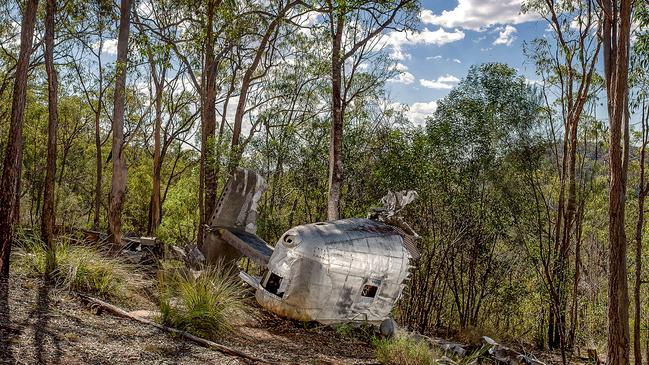Wreckage of WWII B-24 Liberator lay undiscovered in Kroombit Tops National Park for 49 years
For 49 years and six months, the wreck of the WWII heavy bomber ‘Beautiful Betsy’ lay undiscovered on this remote mountainside. How?

She was a B-24 Liberator, a heavy bomber of the US Air Force, christened Beautiful Betsy in honour of her first pilot’s wife.
Beautiful Betsy first saw action in 1943, in a raid on Timor; the following year, after only 25 missions, she suffered mechanical stress during a storm and was retired from combat duty.
She ended up being used as a cargo aircraft, ferrying supplies to the military personnel in Darwin. It was in this role that she took off from the Northern Territory on February 26, 1945, on a night flight bound for Brisbane. She never arrived.
For 49 years and six months, the fate of Beautiful Betsy and the eight men on board – six Americans and two Brits, one of whom, a 23-year-old Spitfire pilot, had been due four days later to marry an Australian girl – was a mystery. No distress call had been made.
Search parties were dispatched to likely spots over the years, only to return scratching their heads. It wasn’t until 1994, during backburning in Kroombit Tops National Park, 400km northwest of Brisbane, that a parks ranger found her after noticing the glint of her fuselage on a forested mountainside.
Photographer Glenn Campbell has spent 18 years scouring the country for WWII relics – downed aircraft, bunkers, ammunitions dumps, unexploded bombs – and shooting them for his ongoing series War in the North.
We’re looking here at the tail end of Beautiful Betsy; other remains of the plane are scattered across the mountainside.
Information boards at this sombre spot – accessible via a dirt road, then a bushwalk – tell the story of what likely happened. The pitch of the propellers suggest the engine was at full power at the moment of impact; it seems the pilot, realising the plane was way too low, had desperately tried to climb out, but hit the mountain while doing so. The four engines were ripped off and catapulted 100m uphill by the force of the crash.
Campbell respectfully photographed the wreck using studio flash units, even in bright sunshine, in order to accentuate its strange, alien oddness in this natural landscape.
“It doesn’t belong,” he says. And fittingly, nature is slowly reclaiming the plane.
“It’s weathering away, and there’s vegetation growing up through it,” he says. “This stuff won’t last forever. I wanted to photograph it before it’s gone.”



